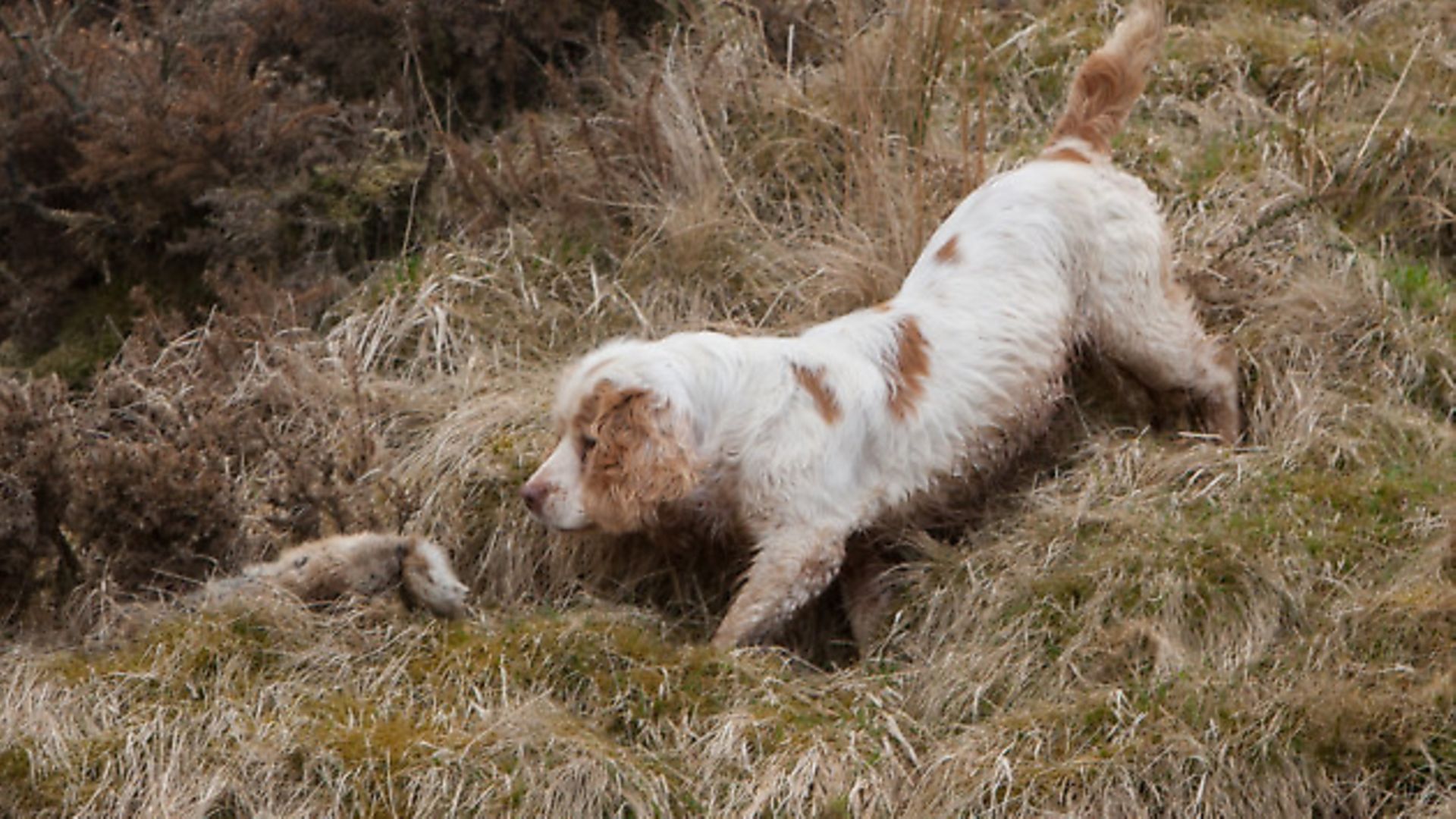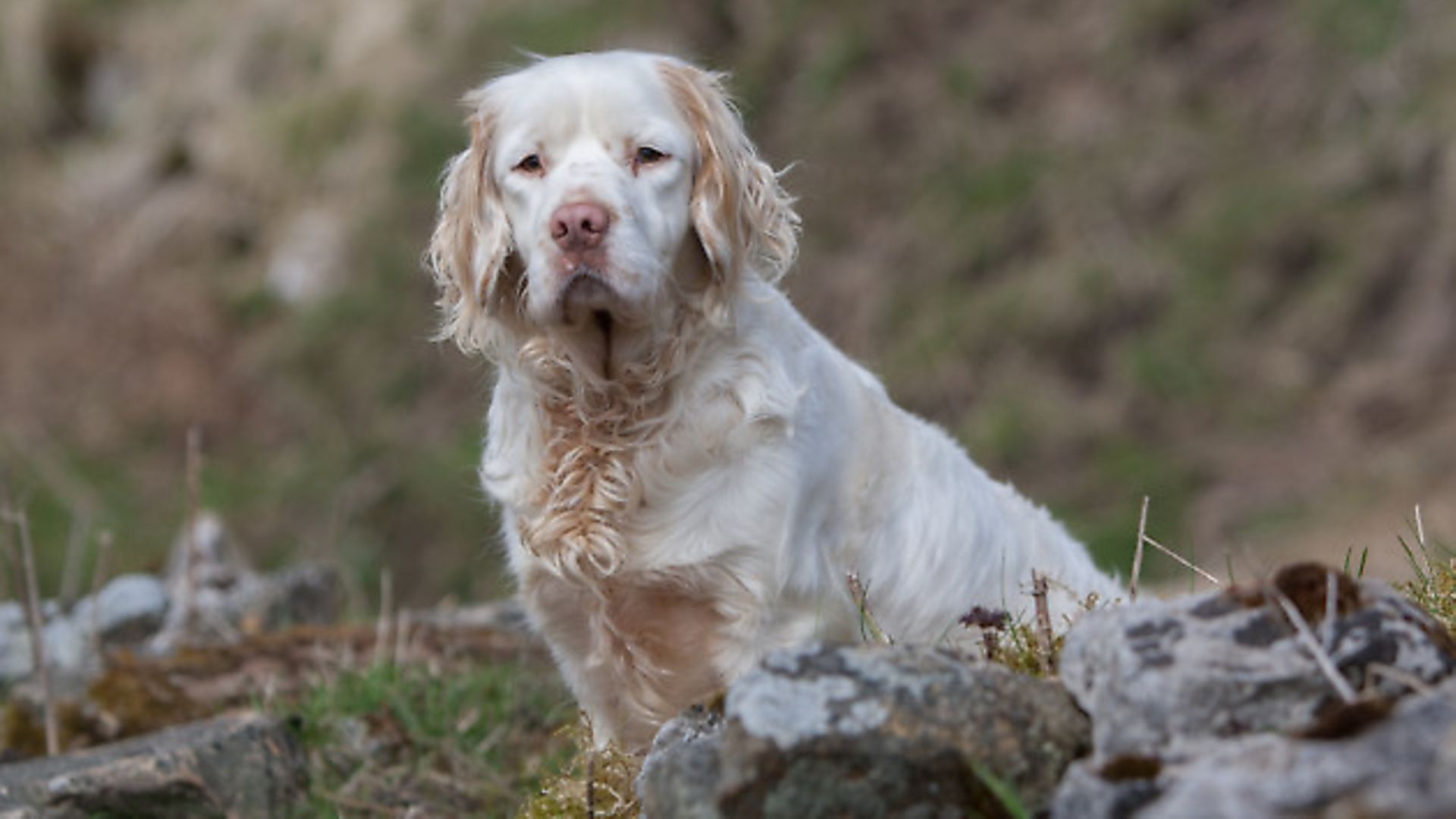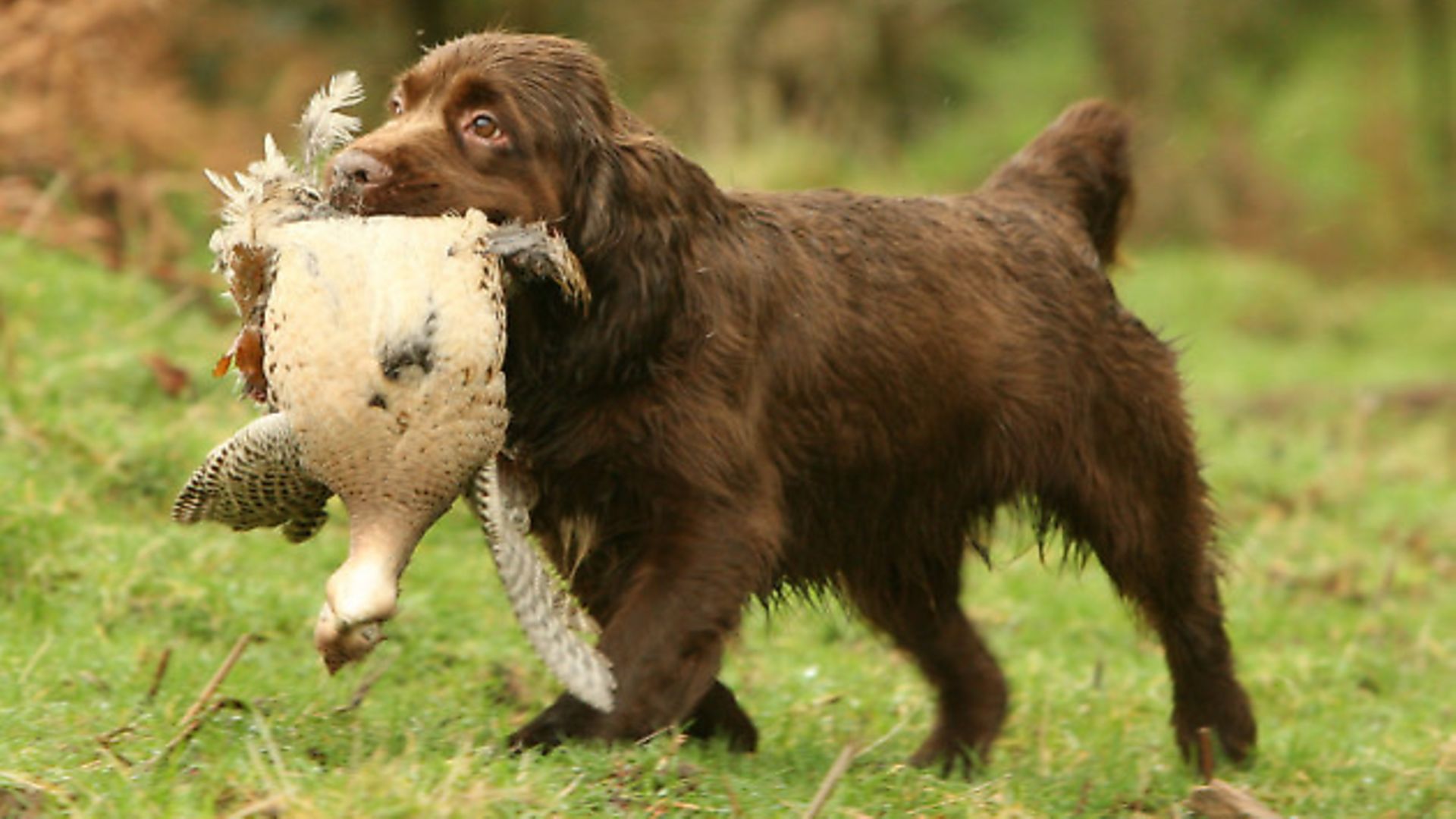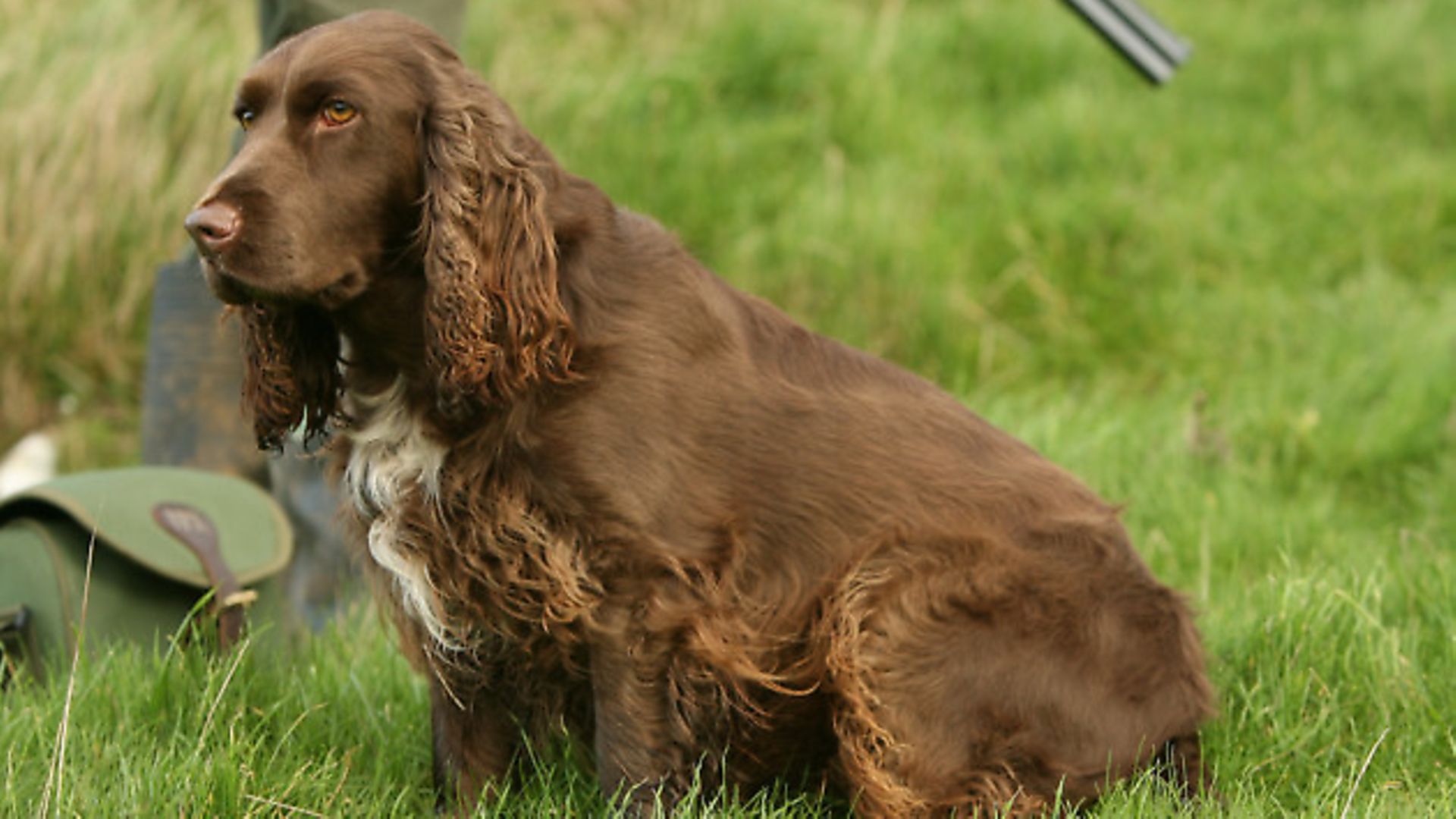All about the Clumber spaniel – a great gundog
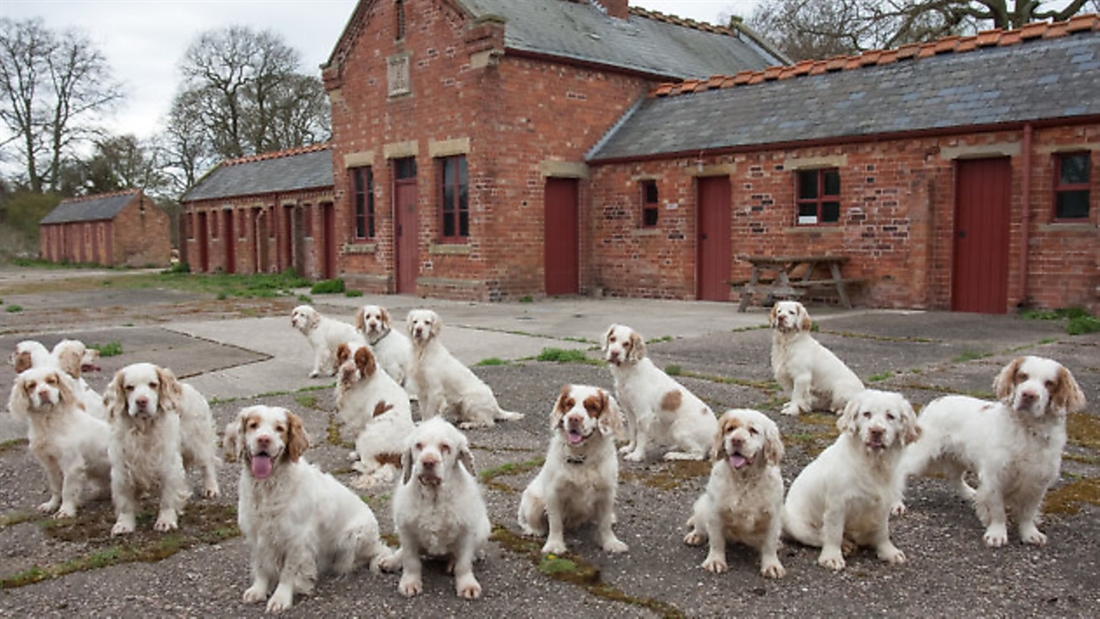
Our Gundog Editor, Nick Ridley, spends a day with the Working Clumber Spaniel Society to find out more about this less common spaniel breed
Nick Ridley is out and about with a very traditional and British gundog, the Clumber spaniel. During 2012 there were 151 Clumber spaniels registered in Britain; a drop of 36% and the lowest registration of Clumber puppies for eight years. Compare this with 12,000 springer spaniels and 13,000 cocker spaniels registered, and you will realise that this is not a common breed.
The breed’s history is uncertain before the middle of the 19th Century. One theory is that it originated in France, stating that the Duke of Noailles at the time of the French Revolution gave his kennel of prized spaniels to the Duke of Newcastle at Clumber Park in Nottinghamshire. The theory goes that the now-extinct Alpine spaniel was bred with basset hounds and the Pyrenean mountain dog, also known as the Great Pyrenees. A second theory is that it is descended from the old type of Bleinheim spaniel, which was later to be incorporated into the King Charles breed of spaniel. Originally these dogs were large gundogs, coloured lemon and white, whereas the modern breed of them is a much smaller toy breed of dog.
What is certain is that the breed took its name from Clumber Park and that the Duke of Newcastle’s gamekeeper, William Mansell, is credited with their development and improvement. Prince Albert, the Prince Consort of Queen Victoria, was a fancier and promoter of the breed, as was his son King Edward VII, who bred them at the Sandringham Estate in Norfolk. The breed was shown in England from 1859 onward. They are referred to in Queen Victoria’s diary. On October 16, 1840, she wrote: “Walked out directly after breakfast before Albert went to shoot. He had his seven fine Clumber spaniels with us and we went into the slopes, with such a funny old gamekeeper, Walters, in order that I should see how the dogs found out their game. They are such dear, nice dogs.”
Until the mid 19th Century, the breeding of the Clumber spaniel was mostly restricted to the nobility. During World War I breeding was stopped entirely, causing their numbers to fall to a record low. In 1925, King George V re-developed a line of Clumbers in the Royal Kennel, which were used in the fields in the Sandringham Estate.
The Clumber spaniel is currently recognised as a Vulnerable Native Breed by the UK Kennel Club, which means it is a breed with fewer than 300 new registrations each year. Other spaniels recognised as such are the field spaniel and Sussex spaniel [see below].
Although not the speediest of spaniels, they were highly prized as game finders. In the early 20th Century they were preeminent in field trials. They are a strong, muscular, powerful yet active dog. From working lines the dogs weigh 55-70lbs and bitches 45-60lbs. The coat is white with lemon or orange head markings, abundant and straight, with feathering around the legs. They are steady, reliable, stoical, great-hearted and highly intelligent and are known for being silent workers with excellent noses.
The breed did not enjoy sufficient support from working owners but was kept going during WWII and the post-war years by show breeders (who continue to dominate). This is now changing, and The Working Clumber Spaniel Society formed in 1984 is the force behind the breed’s revival as a genuine gundog bred for the field. The WCSS kindly invited me along to a rabbit training day on some cracking ground high up in the Derbyshire Peak District where, despite having four seasons of weather conditions in a few hours, including a very heavy hail storm, we had a great day.
The Clumber is a big spaniel but it is surprisingly athletic and the dogs managed the steep-sided gullies with ease. They obviously don’t have the speed of a cocker or springer but once they got some scent under their nose, they really did get a wiggle on. Unfortunately the rabbits were a bit scarce but there were plenty of pheasants for the dogs to flush, and their methodical use of the ground ensured enough action to keep them interested. Some may question the ‘need’ to keep rare breeds of working gundogs but I admire the enthusiasm and dedication of the owners, and let’s face it –they are part of our heritage and far too much of that is being lost!
The following day the Society had its annual AGM at Clumber Park. It was a fantastic turnout with a photo call outside the old kennels of 88 working Clumbers and their owners. I understand that was 22 more than were shown at Crufts this year, which in the drive to get dogs back to ‘fit for purpose’ is a great achievement.
The Sussex spaniel:
The Sussex spaniel appears to have been evident in the UK in the 1800s. Mr Fuller of Rosehill, Sussex is credited with being their founder and kept them for 50 years until the 1850s. They were kept as working dogs on his large estate. Though there were other Sussex spaniel breeders, by the time of World War II there were still only a few Sussex spaniels about. However, breeding was discouraged in wartime and resulted in only five known Sussex spaniels remaining in 1945. The breed was identified by the Kennel Club in 2004 as a Vulnerable British Breed. In 2012 there were only 74 Sussex spaniels registered with the Kennel Club, which makes them rarer than the giant panda, of which there are believed to be around 2,000 living in the wild.
The field spaniel:
The field spaniel is a true dual-purpose spaniel, and those winning on the bench perform equally well in the shooting field. If started young and trained sensibly and slowly, the large majority of the breed take readily to work. An excellent rough shooter’s dog, the field spaniel has a keen nose, willingness to face the heaviest cover, is excellent in water and utterly tireless. Not natural retrievers, they mostly have to be taught young, but once learned, the lesson is never forgotten, and they have tender mouths and are good on wounded birds. The Field Spaniel Society was founded in 1923 with a view to running field trials. The Society now runs an annual field trial and working test. Fields compete against other spaniels in tests run by various spaniel societies across the country. It remains a rare breed, even in the UK. In 2009, a total of 51 dogs were registered with The Kennel Club and the number has been in steady decline since 2000. Out of all the spaniel breeds registered with The Kennel Club, the field spaniel has the lowest number registered year on year.




